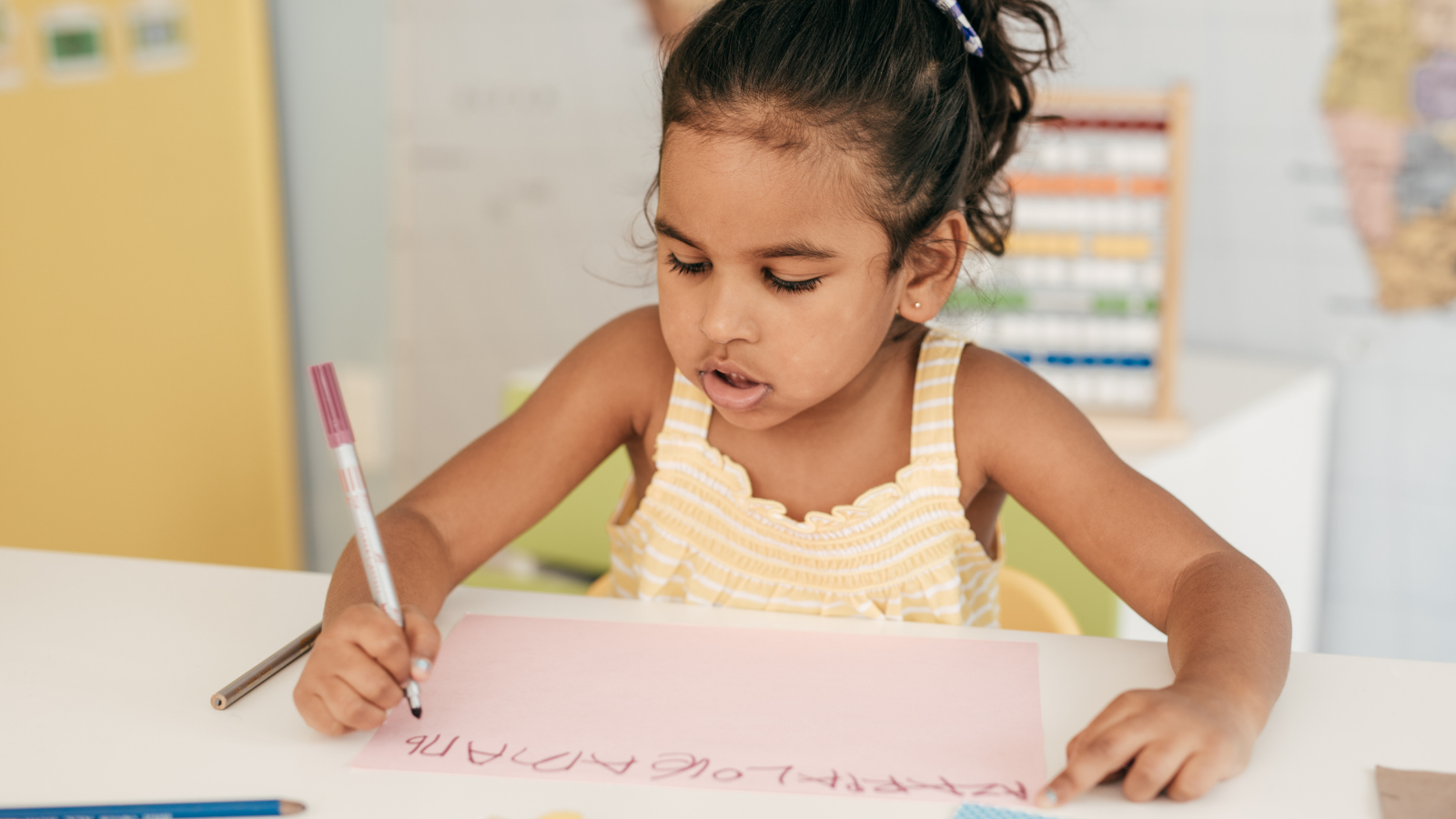
Written communication skills can emerge and be practiced earlier than you might think.
By Amber Fujita, Library Assistant, Tysons-Pimmit Regional Library
Encouraging Emergent Writing
According to “Promoting Preschoolers’ Emergent Writing” in the National Association for the Education of Young Children’s (NAEYC) Young Children journal, children as young as 2 years old begin progressing through the stages of learning to write. These first attempts at the writing process — beginning with imitating it by creating representative drawings and symbolics markings — is called “emergent writing.”
The stages of emergent writing include all types of early visual and written communication, from drawing and scribbling to invented spelling and eventually sentence writing. Encouraging preschoolers’ practice of these activities also helps them gain fine motor skills, understand the expression of ideas through written words, and learn to identify and recognize story structure patterns in text.
Fine Tuning Motor Skills
Developing fine motor skills can be easy and fun, especially with support from your library! The Tysons-Pimmit Regional branch offers a Make and Take craft called “Design a Shirt for Tacky the Penguin,” which prompts children to draw and fold a shirt for a penguin. Kingstowne Library invites preschoolers to express their ideas in a monthly drawing display on themes such as rainbows or flowers. An added bonus? Handwriting their names to label drawings for display provides children with extra emergent writing and fine motor skills practice.
Practice fine motor skills with this printable tracing activity!
Putting Ideas Into Words
In her article “Understanding Beginning Writing Skills in Preschoolers” on GetReadyToRead.org, Kristin Stanberry writes: “The goal is to help children understand how writing works, that it connects in meaningful ways to reading, and that it communicates information, through words and symbols.”
Go beyond read-alouds and let you preschooler tell you a story. Write it down and let them draw the illustrations. This is a great example of self-expression and encourages young children to identify with the world around them and identify the connection between storytelling, illustrations and the written word.
Recognizing Story Structure Patterns
Storytimes are about more than immersing yourself in a fairy tale or singing songs. Interactive storytimes also teach children to recognize patterns in the story structure by listening to and following story prompts. They also highlight early literacy skills and practices that can help caregivers increase children’s awareness of written words. Search the FCPL events calendar to find an in-person storytime near you or virtual storytime options!

